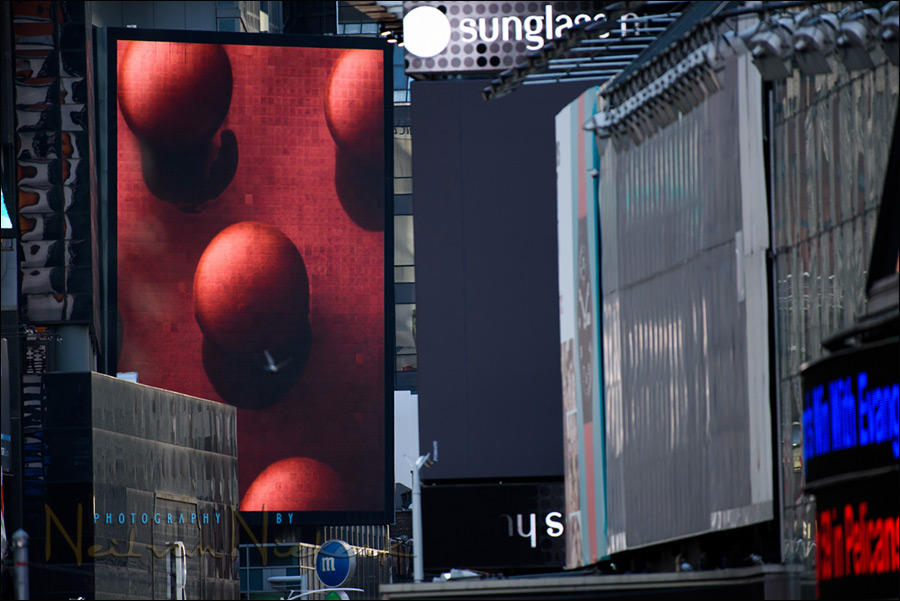
review: Nikon 200-500mm f/5.6E VR lens
The Nikon 200-500mm f/5.6E VR (B&H / Amazon) is an immediately appealing lens. It is only $1,400 for a telephoto zoom with a superb range of 200mm to 500mm. $1,400 is a very attractive price, especially when other lenses such as the Nikon 200-400mm f/4 VR II (B&H / Amazon), comes in at 5x that price! I had the first version of the Nikon 200-4oomm and it was stellar! I loved it, but didn’t use it enough to warrant such an expensive lens mostly languishing on the shelf. But at $1,400 even occasional use for sport or nature photography is very attractive.
But then the question comes up, is the Nikon 200-400mm f/4 lens 5x as sharp as this lens? Or, considered in another way, is the new Nikon 200-500mm f/5.6 only 20% as good as the top lens?
This is the thought I had for this review when I took the Nikon 200-500mm f/5.6E VR (affiliate) to the streets of New York during a momentary warm winter’s day. I wanted to photograph some compressed perspective cityscapes – flattening the city scenes to give abstract and even surreal impressions of the city. (There’s not much nature and wildlife photography to be had in New Jersey in the winter.)
The Nikon 200-500mm f/5.6E is advertised to offer 4.5 stops of Vibration Reduction! With that, I used this lens hand-held at medium shutter speeds, but took extra care to steady myself, or brace myself. With such long focal lengths, sloppy technique shows up very quickly. As it was, it was an interesting learning experience shooting with such long focal lengths again – I had forgotten how much effect air turbulence can have on image sharpness!
Out of the box, the lens is impressive – zooming the lens feels smooth. The build quality feels and looks really good. It feels like a top Nikon lens. The weight is a not-intolerable 81.2 oz / 2.3 kg. You couldn’t realistically expect a lens like this to weigh less. Cradling it in my arms as I walked, I was comfortable carrying it for a few hours as I walked around New York. It’s not really a huge beast of a lens, considering the focal range.
When looking at the 100% crops of the images, keep in mind that this was shot with the Nikon D810 (affiliate), and that such a high-resolution camera shows up any flaws quickly, whether optical or in technique.


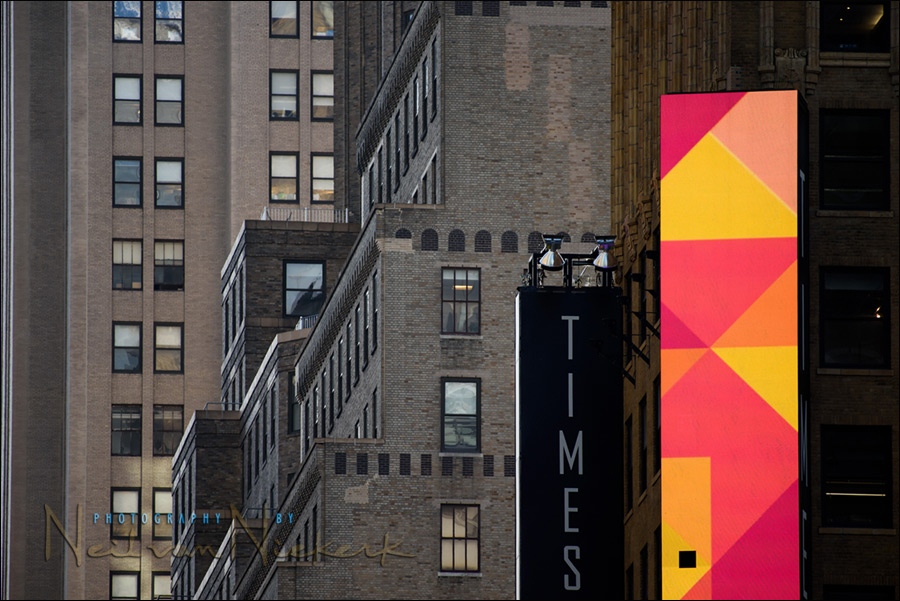
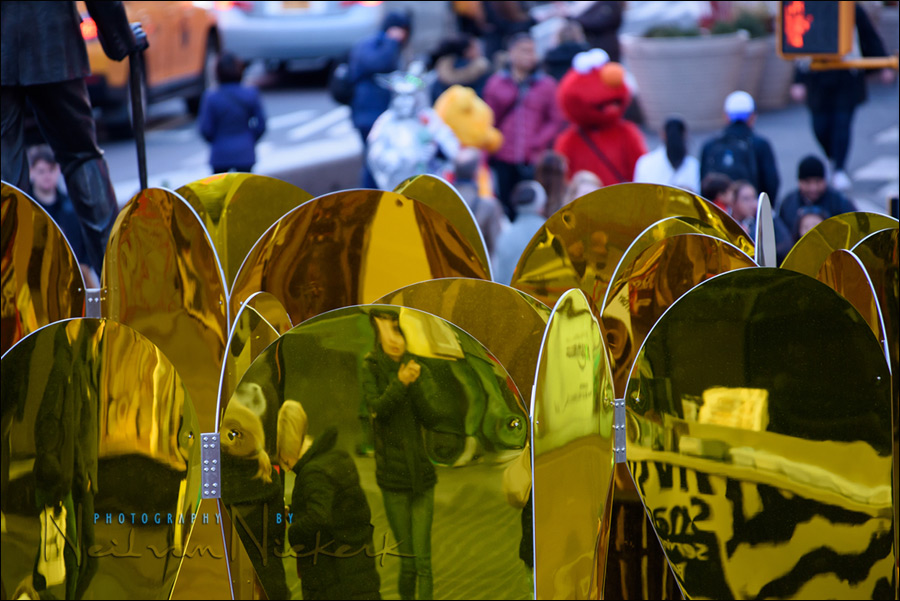
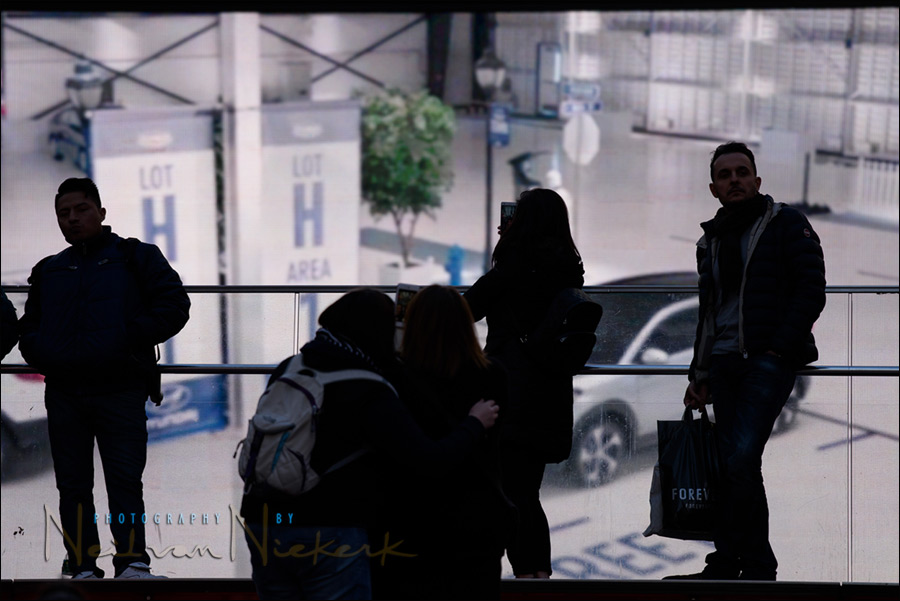
Specifications of the Nikon 200-500mm f/5.6E VR lens
- Constant aperture of f/5.6
- Three Extra-Low Dispersion Elements to reduce chromatic aberrations and improve image sharpness.
- Silent Wave Motor AF System to give quiet auto-focusing.
- Vibration Reduction offering an extra 4.5 stops of hand-holdability.
- Detachable, Rotatable Tripod Collar.
- Rounded 9-Blade Diaphragm which helps give smoother bokeh.
- Weight: 81.2 oz / 2,300 kg
Nikon 200-500mm f/5.6E VR (B&H / Amazon)
Bokeh, lens sharpness and air turbulence
The bokeh of lenses fascinate me – bokeh can add so much character and ‘color’ to a photograph at times. Similarly harsh or wiry bokeh just brings images down for me when it intrudes. Therefore one of the first things I checked with this lens, was how the bokeh appeared. I took a few photos of random things around Times Square, just to see how the background appeared. I was caught by surprise when I saw the bokeh in a sequence of images look really strange.
Here is the full image, as an example and below, the 50% crop of the background:

1/250 @ f/5.6 @ 400 ISO …. 500mm.
Below, a 50% crop of part of the background:

That was some of the craziest bokeh I’ve ever seen, I thought to myself. This is ugly!
But other test photos showed a much smoother bokeh. A pleasantly blurred background:
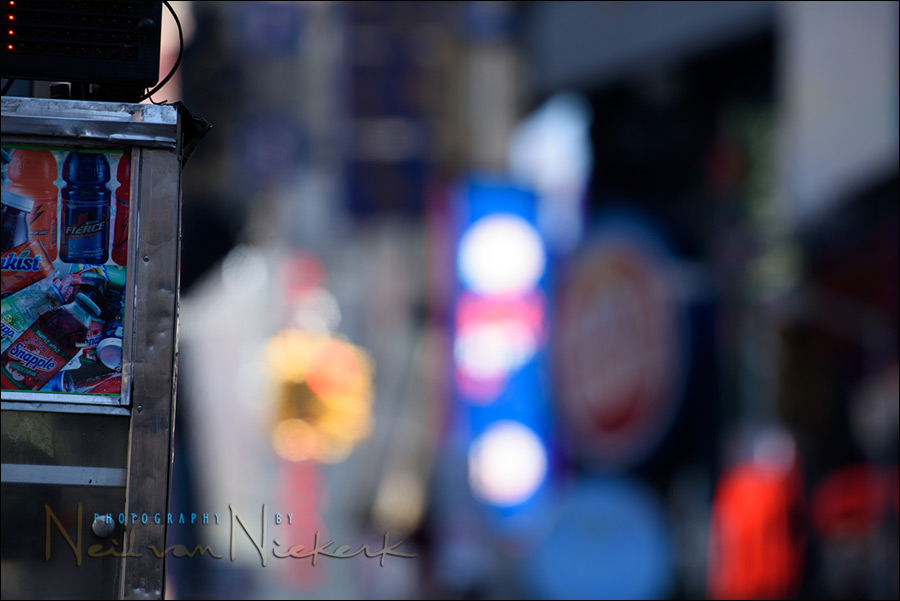
The full image here shows the bokeh @ 400mm
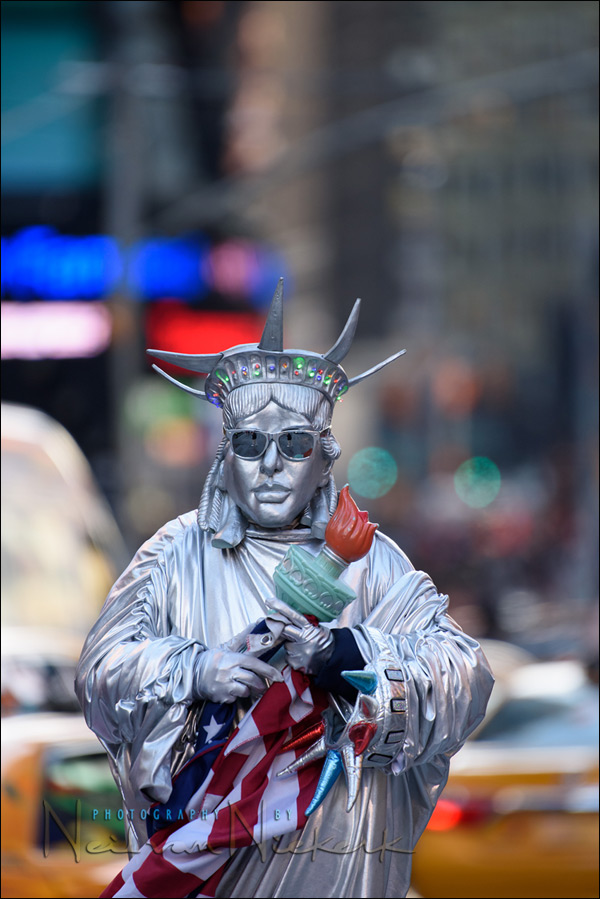
The full image here shows the bokeh @ 500mm
With examples like that, I was happy that the bokeh of this lens looks quite good! No intrusively harsh optical craziness to detract attention from your subject.
Then I figured out what was happening with the background in that first image with the crazy bokeh – air turbulence and city smog! With this warm day, there must have been pockets of air, which were heated up, or where the city smog reduced clarity.
Check this example where the background looks textured like an oil painting:
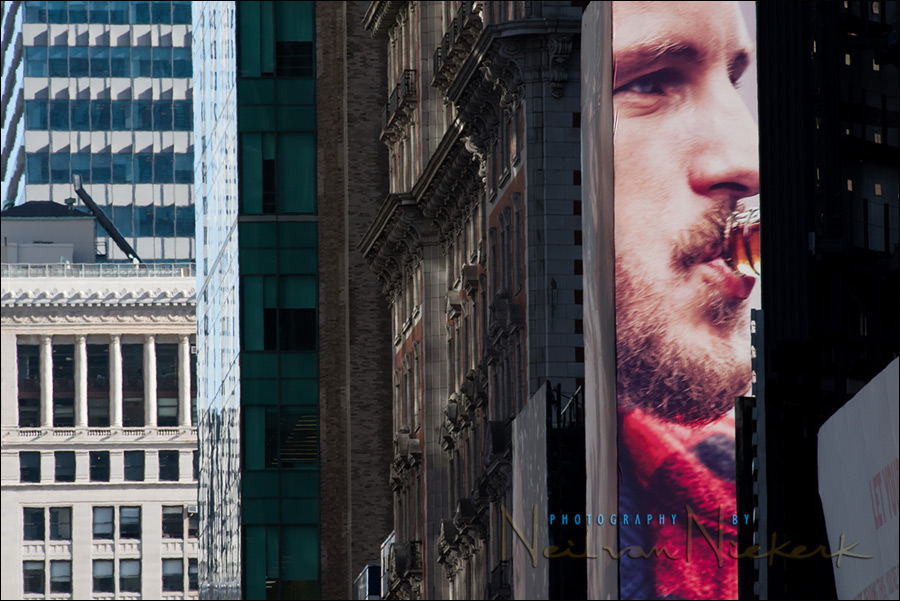
1/250 @ f/16 @ 800 ISO …. 500mm.
Below, a 50% crop of part of the background:
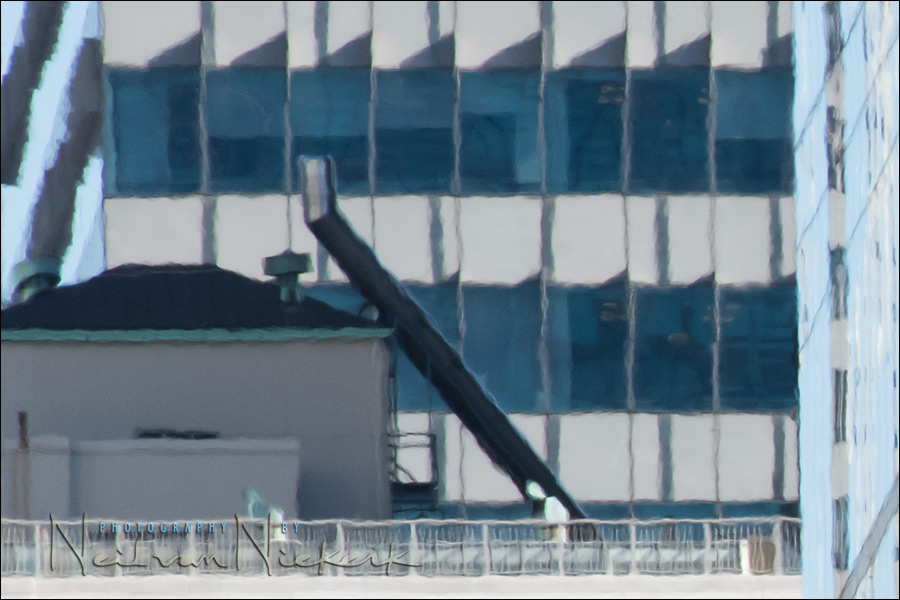
With that knowledge regained, I avoided shooting at longer distances for images where I wanted to see how sharp this (hand-held) lens was.
Lens sharpness – A closer view with 100% crops
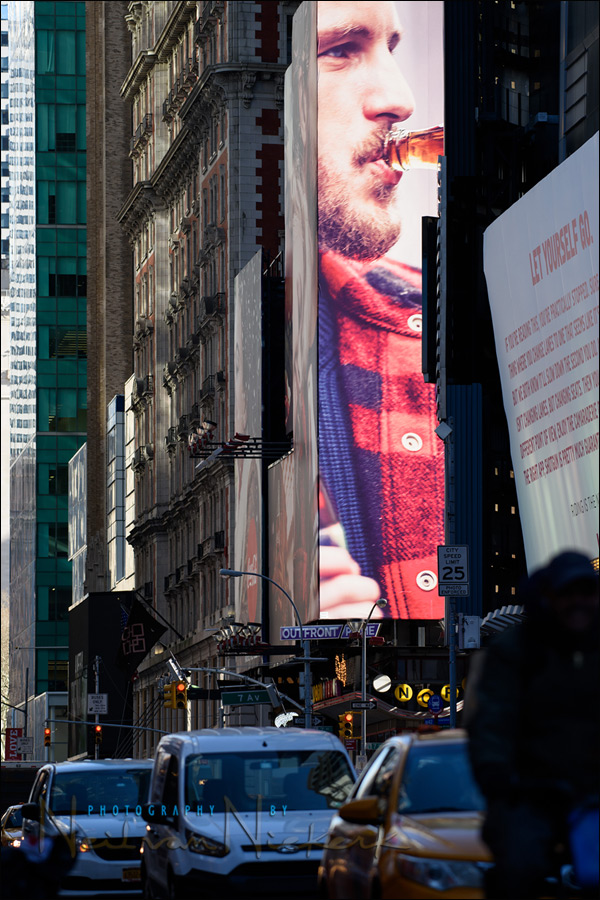
1/250 @ f/5.6 @ 800 ISO …. 500mm
Below, a 100% crop of part of the image, showing image sharpness at 500mm.

The sharpness here at 500mm looks pretty good. I can live with this. Not as crisp as the 200-400mm f/4 VR II lens might’ve delivered, but still, considering this was hand-held, it is pretty good.
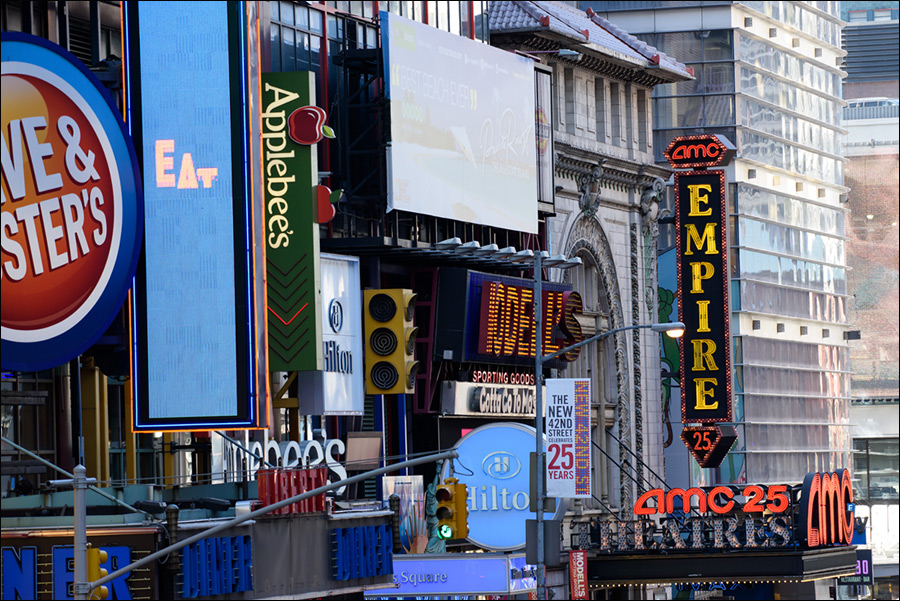
1/200 @ f/5.6 @ 800 ISO …. 200mm.
Below, a 100% crop of part of the image, showing image sharpness at 200mm.
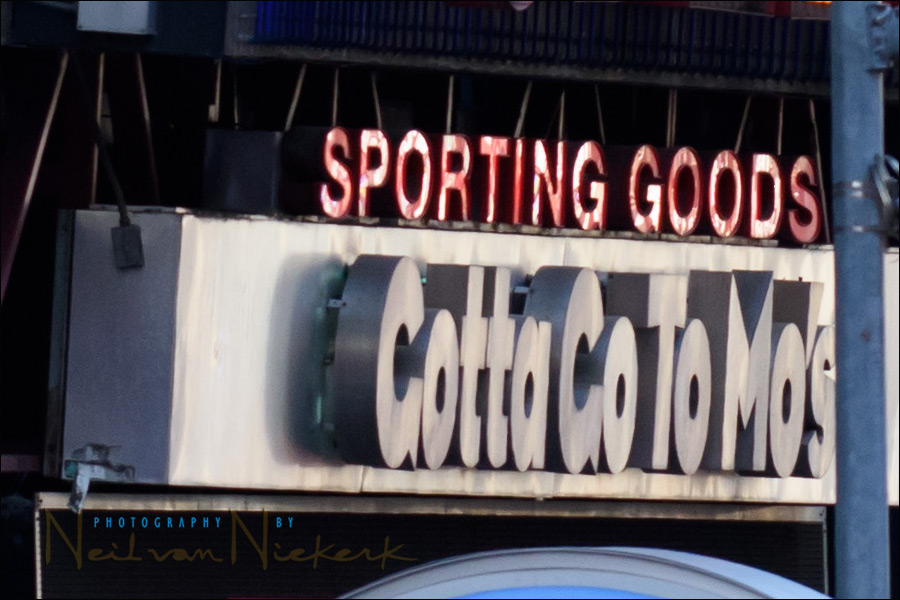

1/200 @ f/5.6 @ 800 ISO …. 200mm
Below, a 100% crop of part of the image, showing image sharpness at the top-edge of the frame.
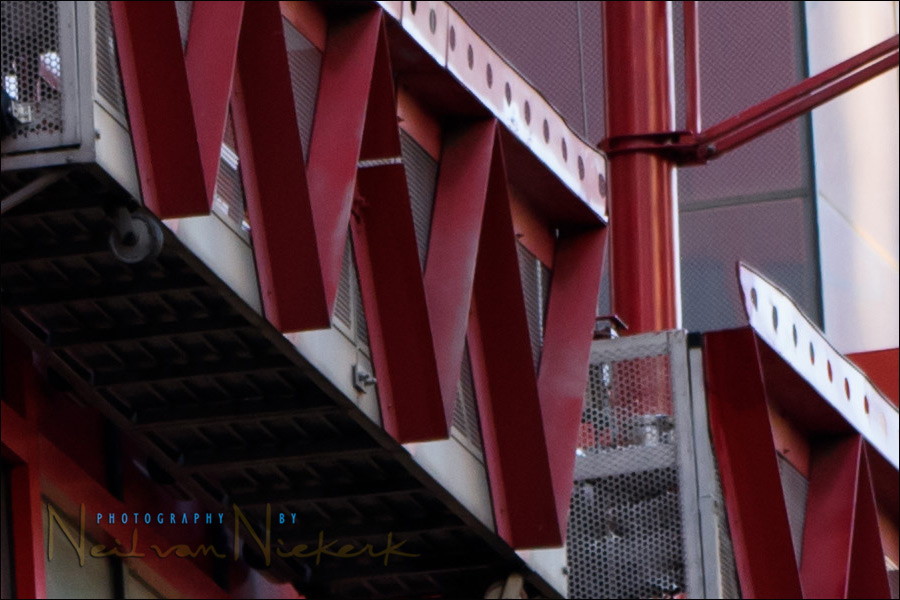
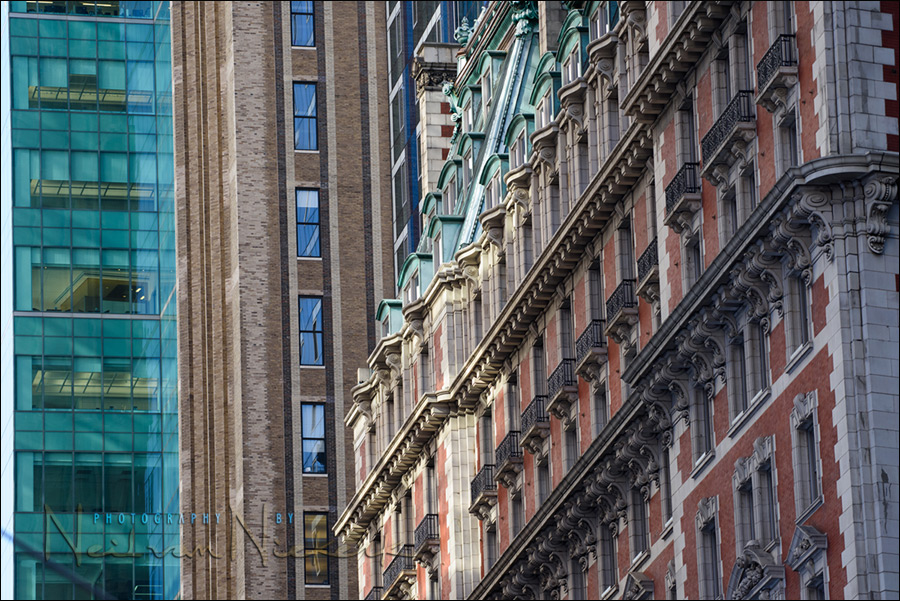
1/320 @ f/5.6 @ 800 ISO …. 200mm
Below, a 100% crop of part of the image, showing image sharpness at 200mm.
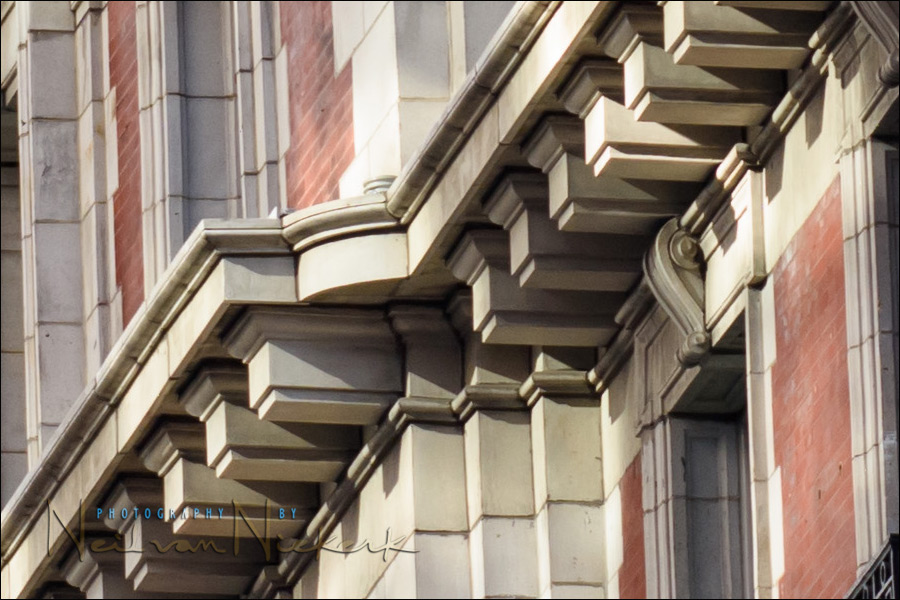

1/500 @ f/5.6 @ 800 ISO …. 500mm
Below, a 100% crop of part of the image, showing image sharpness at 500mm.
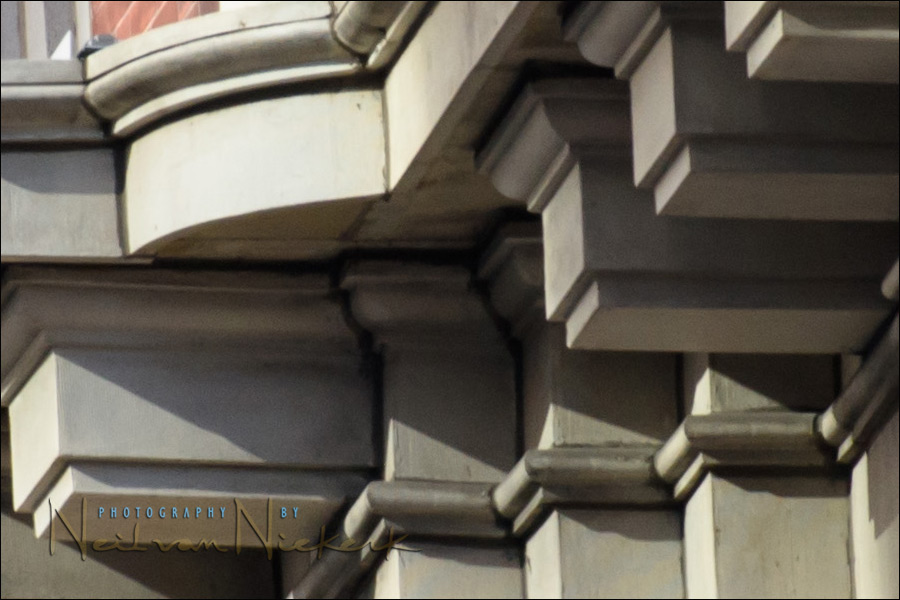
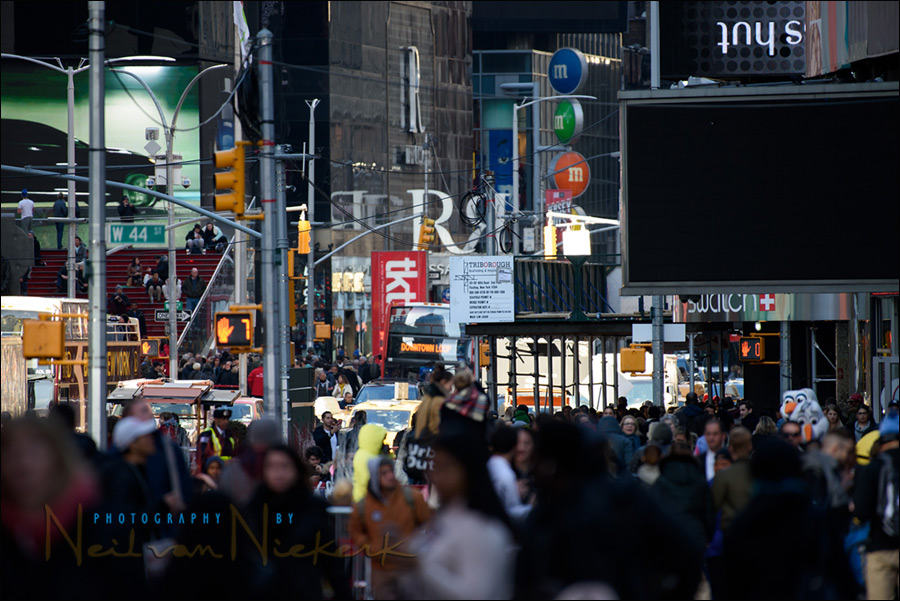
1/400 @ f/5.6 @ 800 ISO …. 500mm
Below, a 100% crop of part of the image, showing image sharpness at 500mm.
Image sharpness might have been compromised here by air turbulence from the traffic and the sun-lit areas.
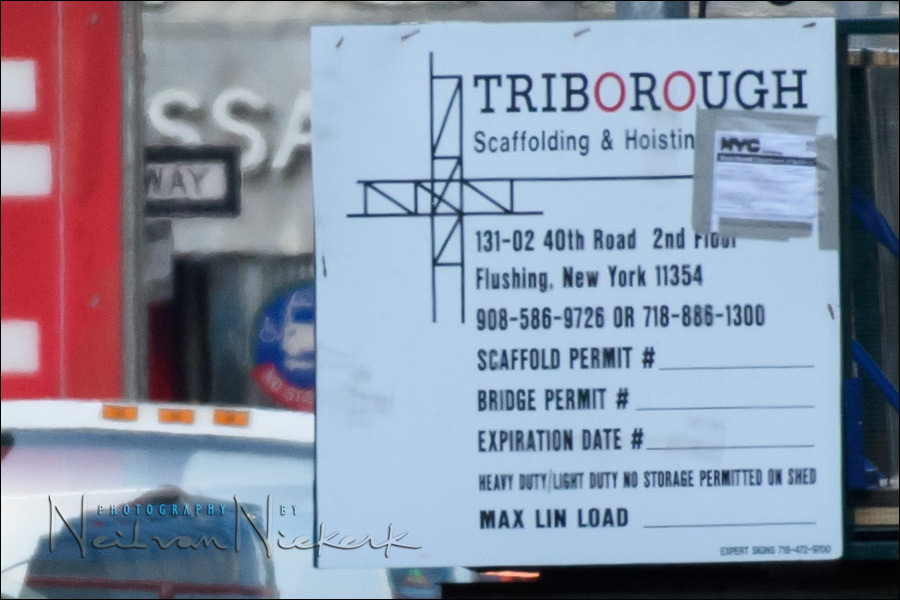
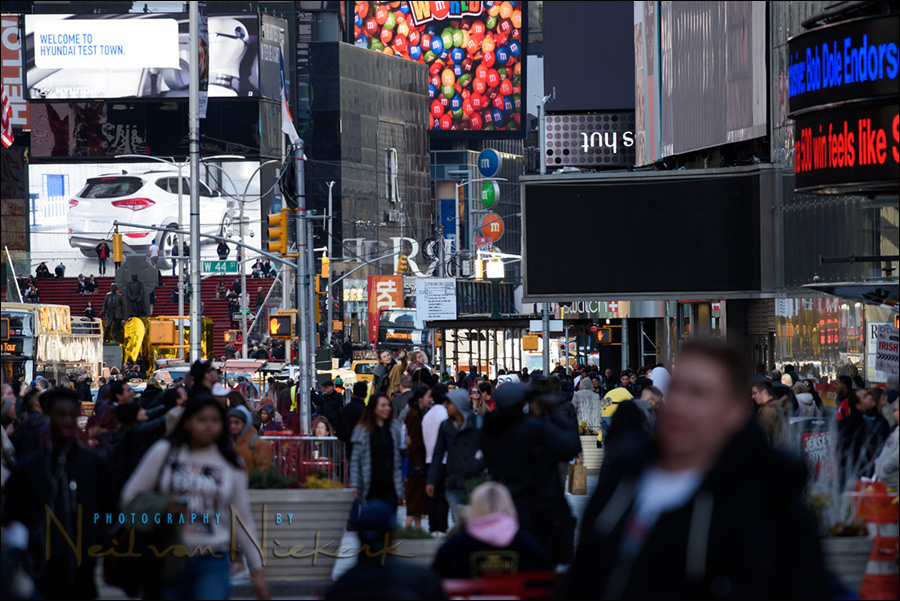
1/400 @ f/5.6 @ 800 ISO …. 300mm
Below, a 100% crop of part of the image, showing image sharpness at 300mm.
The text on the TKTS billboard looks sharp enough, especially in that it is an electronic display.
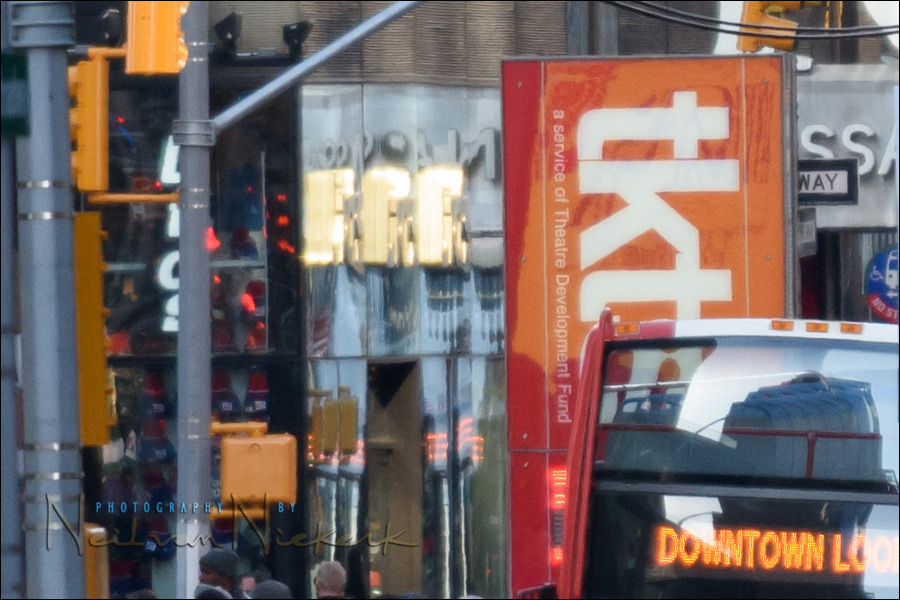
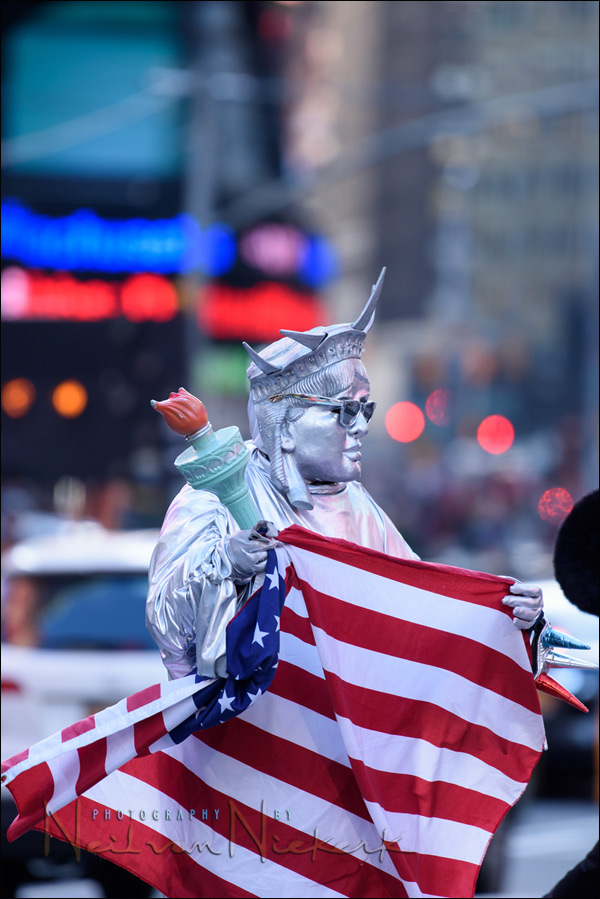
1/160 @ f/5.6 @ 800 ISO …. 400mm
Below, a 100% crop of part of the image, showing image sharpness at 400mm.
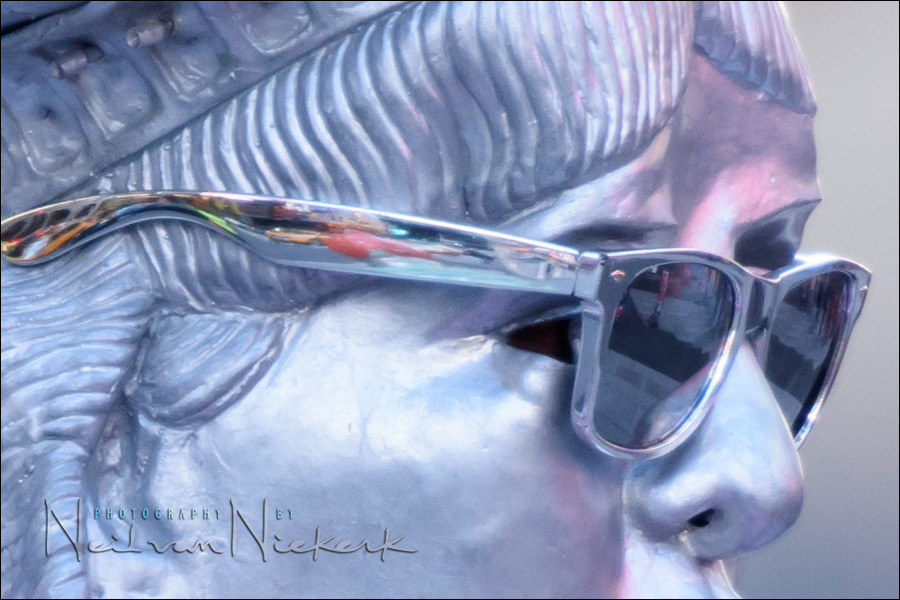
Summary
I was genuinely surprised with the Nikon 200-500mm f/5.6E VR (B&H / Amazon). It performed much better than I anticipated with the $1,400 price tag! Somehow Nikon has pulled it off, giving us a very usable long telephoto zoom at at affordable price!
However, if image sharpness is super-critical for you (and you have the cash), then the Nikon 200-400mm f/4 VR II (B&H / Amazon), is the lens you want.
- Other reviews of Nikon gear on the Tangents blog.

Thanks for the review Neil. I’m curious about the focus speed. Would this lens be suitable for sporting events such as baseball or football?
Obviously my testing was with static objects, rather than athletes running, but I didn’t have a problem with focus hunting. It latched on pretty quickly even with something that was in the shade, i.e., lower contrast.
Still, I think the 200-400mm f/4 or the f/2.8 telephoto primes will be better for this, allowing you a faster shutter speed to stop action.
Excellent review and samples to demonstrate how much fun this lens can be.
One (not-so-minor) point that you hit upon is the same thing I’d been wondering about while I was checking out this lens: Air turbulence. Astronomers have to deal with this as well, and this 200-500mm f/5.6 lens essentially approaches telescopic size in its girth as well as length when fully extended. Therefore, the photographer may face environmental air turbulence not only in the direction of your subject, but also INSIDE the lens tube itself. Astronomers and photographers have a few options: 1) Wait for the turbulence to settle down, 2) attempt to normalize the temperature difference between lens and outside air if internal turbulence is the problem, or 3) simply accept the look as a characteristic of that day’s shoot. Event shooters will usually need to go with option #3. I could actually see this funky look growing on me if I was shooting this lens regularly. Thanks again for the review and the effort it takes to compile it for readers!
Surprised by the amount of bokeh you can get at f/5.6!
You mean the shallow Depth-of-Field.
Bokeh is the quality of the blur of the background. (Usually the background, although you could also describe the foreground blur, which is different than the background blur.)
Shallow DoF is not the same thing as great bokeh.
Now we have that out of the way – the surprisingly shallow DoF you see here, has to do with the distances. The distance that I am from the subject, and the distance to the background. With such long focal lengths, and such distances in NYC, it isn’t too difficult to blur the background.
The same distance to the background, was also the problem with the air turbulence creating those painterly background textures.
By turbulence do you mean VR?
Air turbulence – such as with heat creating a shimmering look. Or anything else which causes movement of air, and reduces the clarity.
VR = vibration reduction.
These things are not even remotely connected. Read the article to see the examples.
Like your article about this lens. I used mine today at daughters swim meet and had very similar success. With my monopod it was manageable from size and weight. The pictures were spectacular. Using many continuous bursts to stop action. Great lens!
Thanks for the hands on review Neil – much better than reading all the marketing fluff.
I think this is a good lens for e.g. parents shooting sports in daylight (assuming it has fast AF lock-on which is KEY to sports) as it has a good range and reach at an affordable price.
However the f5.6 is a killer at night/ indoor games. E.g. At ANZ stadium in Sydney I was at 3,200 ISO to get 1/1,000s @f2.8 – which means you’ll be at 12,800 ISO at f5.6 as a minimum as 1/1000s isn’t really enough to freeze action.
I really really hope we aren’t going to a world where parents own lenses like a 200-500 to shoot their kids sports.
Even though it’s quite cheap, I do see it as a specialty lens.
yep
Thanks for the review Neil. I would love if you could do a comparison between the sharpness and overall quality of this lens compared to the Nikon 80-400mm Lens which is about twice the price tag.